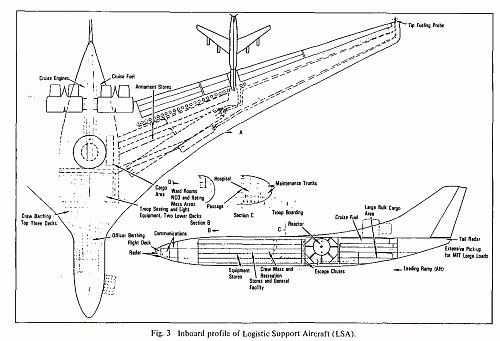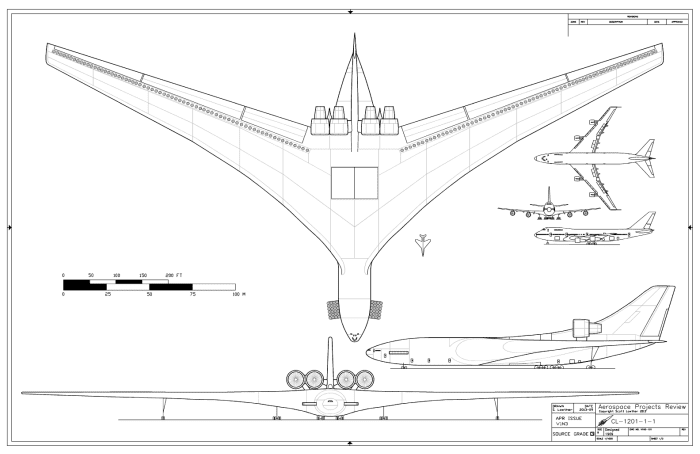 | ||
The Lockheed CL-1201 was a design study by Lockheed for a giant nuclear-powered transport aircraft in the late 1950s. One role envisaged was that of airborne aircraft carrier.

Overview

The CL-1201 design project studied a Nuclear-powered aircraft of huge size, with a wing span of 1,120 feet (340 m). Had it been built, it would have had the largest span of any airplane to date.

The wing was of crescent form, similar to the British Handley Page Victor V-bomber, but unlike the British design it was tailless.

Power was derived from the heat generated by a nuclear reactor and transferred to four jet engines where it would superheat the air passing through to provide thrust. The craft would be capable of staying airborne for long periods of time. At low altitudes the jets would burn conventional aviation fuel. In order to get airborne in the first place it required 182 additional vertical lift engines.
Two variants were studied, a logistics support aircraft and an airborne aircraft carrier.
The logistics support variant had a conventional heavy transport role, carrying hundreds of troops and their equipment to the battle zone.
The airborne aircraft carrier could carry up to 22 fighter aircraft externally and had an internal dock capable of handling two air-to-ground shuttle transport aircraft.
Span: 1,120 feet
Gross weight: 11.85 million pounds
Endurance: 41 days
Reactor output: 1830 megawatts
Crew: 845
Tactical fighters carried (AAC variant): 22
Lift engines: 182
